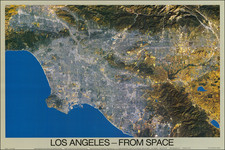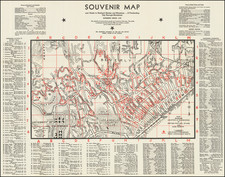Time Table and Fares of the Wilmington Transportation Company, effective from October 1, 1946, provides a schedule of the daily sailings of the company's steamer from Wilmington to the iconic Santa Catalina Island, situated off the coast of Southern California. Comprising a pictorial map, the pamphlet illustrates the routes connecting Wilmington, Los Angeles, and Long Beach to the coastal expanse of Catalina around Avalon, incorporating the Pacific Electric R.R. lines extending into both Los Angeles and Orange County.
The post-war period of the 1940s witnessed a surge in transportation services across the United States, driven by a renewed spirit of leisure and economic recovery. In California, the allure of Catalina Island as a nearby escape became even more pronounced, offering a refreshing oceanic haven from the urban hustle of Los Angeles. The Wilmington Transportation Company played a pivotal role in this cultural shift, facilitating seamless journeys between the mainland and Avalon, as evidenced in this timetable.
The embedded pictorial map is notable for its emphasis on the maritime and rail routes, capturing the interconnectedness of Southern California's transportation ecosystem. The stylized rendition of Catalina's coastline around Avalon is complemented by the delineated paths of the Pacific Electric R.R., a testament to the era's blending of sea and rail travel. It underscores the significance of such networks in structuring and enriching Californian leisure experiences, reinforcing Avalon's position as a major attraction.
Furthermore, the detailing of fares, schedules, and associated taxes not only serves as a practical guide for travelers of that period but also offers contemporary readers insights into the economic dimensions of transportation in the mid-20th century. The Wilmington Transportation Company's assertion of its rights to modify schedules and steamers without prior notice evokes the fluidity and adaptability of maritime enterprises in the face of changing operational challenges.












![[1874 Los Angeles Real Estate Indenture and supporting documents]](https://storage.googleapis.com/raremaps/img/small/82641.jpg)


![[Southern California Citrus Fair Promotional Broadside] Riverside Exhibit / Removed From Riverside Cal. to Armory Hall, Los Angles, Open Day & Eve'ng from Feb 29 to March 6th 1888](https://storage.googleapis.com/raremaps/img/small/74529.jpg)
